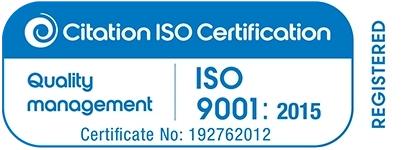Leverage technology to boost IT skills development
“The UK is currently in the grip of an IT skills crisis with an estimated 12.6 million lacking even the most basic digital skills,” Chris Neath, the Head of New Product Development at LapCabby told Information Age. With this ongoing issue reaching constant new heights, we need to assess how to develop advanced technology talent. Chris discussed the drop in IT skills across the UK, and identified approaches available to bridge this skills gap.
Chris highlights the criticality of the situation, “According to the EU Commission, by 2020 Europe will have a shortfall of 900,000 much needed IT professionals.
In the UK, it’s a time of turbulent change, both politically and economically and fostering home grown talent will be even more important than before.
We’re already seeing some companies take a radical approach, hiring IT talent with less than 100% of the skills needed for the job, and giving them intensive online learning to bring them up to speed.”
5 Top Tips from Pluralsight’s Technology Learning Summit
We have identified key insights from Pluralsight’s recent Technology Learning Summit and crammed them into 5 digestible key tips to inspire CIO’s long term approach to developing the skills of their IT department.
Check out our tips below, or get the full article and detailed summary from the summit in our interview with Information Age.
-
Retain and foster talent
As Chris highlighted, the development does not only lie with entry level talent, but that existing talent must be engaged to prevent being lost to the competition. Chris explained, “This is essential for innovation – and skills are kept alive and fresh when disruptive technologies are embraced and new tools and different ways of working are tried out.”
-
Loosen the reins
By empowering staff with opportunities for self-directed learning, Chris noted the power of building a culture of trust, “grant access to learning tools that will give the power to your team to learn exactly what they want. This will bring new skills to the team that you didn’t even know were needed.”
-
Keep a radar on Emerging Technologies
Identifying the skills gaps and training needed within your team will come through delivering a ‘healthier learning culture’. A key step in creating this culture can be to encourage the understanding of emerging technologies relevant to your business, as Chris states, “map your team’s skills to their proficiency in these tech areas”.
-
Get social
By developing a community feeling, the team has the freedom to identify what works for them and learn from each other. And by integrating a social aspect, through hackathons or forums for instance, communication remains open and receptive. As Chris states, “Social learning is a great way to encourage dialogue and also a way to encourage your teams to reinforce their new knowledge.”
-
Build a culture of continuous learning
As skills, technologies and processes develop so quickly, IT teams’ skills must have the ability to adapt just as quickly. Which Chris nicely summarises, “By creating a culture of continuous learning, you’re helping to future proof your IT teams.
Equally, employees will be able to solve more problems for the business, supercharge their own professional development and even change the IT industry. The possibilities are limitless.”
To enable your team to utilise and effectively manage your device deployment download our useful guide.
[button type=”warning” size=”lg” link=”http://info.lapcabby.com/7-steps-effectively-manage-devices-digital-classroom”] 7 Steps to Manage Devices [/button]




